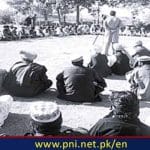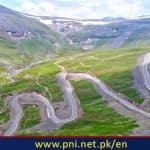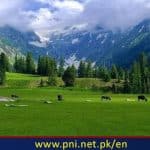KARACHI, Oct 31 (APP):By Rafia Haider
Ongoing efforts for successful transplantation of trees, exposed to possible destruction in Karachi, along with cultivation of numerous flowering and fruit trees, shrubs and plants at the Kidney Hill Park hold optimum chances of its being turned into a sustainable component of “Green Lung” prerequisite to combat atmospheric pollution and growing temperatures in the coastal city.
Karachi among the cities worst hit by climate change definitely needs a Green Lung, ideally a large sized forest cultivated in its suburbs, however, given the ground realities this may not be possible hence approach to have green covers scattered across the ever expanding city is a viable option to combat the associated challenges.
The attempt being made for protection of trees, uprooted or simply being cut down for different development schemes and/or expansion projects undertaken by government or private entities has its deficiencies in particular context of Karachi divided in categories as water logged, saline and dry land zones making it necessary that uprooted full grown trees are transplanted in specific areas in accordance to conditions required for their healthy survival.
Dr. Rafi ul Haq, a senior plant ecologist while emphasizing importance of scientific approach for tree transplantation as well as cultivation of saplings and seedlings reminded that due stock of land, soil properties are crucial for full and proper growth of trees, achieving the target of robust and sustainable green cover with nil or minimum chances of stunting, damage and loss of precious resources in terms of finances, labor and time.
“How can we ever forget that precious trees uprooted from Garden West, during road expansion scheme, were moved to a dedicated site off M.A. Jinnah Road but met the fate of failed transplantation causing massive loss to the nature and ecology,” reminded the consultant with vast experience of working for IUCN and other reputable organizations.
In particular context of Kidney Hill Park, spread over an area of 62 acres of human kidney shaped land, the scenario was different as it emerged one of its own kind of public facility that underwent massive transformation on scientific lines consequent to its evacuation by almost all categories of encroachers through Supreme Court intervention paving way for support on part of different stakeholders under leadership of the then Municipal Commissioner of Karachi, Dr. Saif ur Rehman.
“A systematic approach was adopted and an extensive study was conducted of the site allotted as a park by Karachi Development Authority in 1964 but left unattended and remained so even after being handed to Karachi Municipal Corporation in 1974 till I took upon himself to turn the public park into an exemplary facility in 2019,” said the civil servant representing Pakistan Administrative Service.
Shamim Bano a mother of four , visiting the park every day for her morning walk, expressed her amazement at the pace of transformation, “this is like from ruins to havens with wide range of flora and fauna — hundreds of plants, trees, shrubs attracting birds — an additional charm for nature lovers and children”. She was equally appreciative of the special efforts made for landscaping with bushes shaped into canopies and different trails developed.
Each adorned with needed fixtures (basically benches) and named after different landmarks of the country. Two of the major trails are known as Kokan and Dhoraji representing the surrounding localities hence creating a deep sense of belongingness among the visitors. As already mentioned people, mainly from the vicinity, visiting the park consider the change to be almost magical and are not wrong.
Faran Sangrani, a resident of Dhoraji Colony admitted that he and his neighbors, over the years, were little conscious about their loss and simply had no interest in the facility since a deep sense of fear and scare existed owing to presence of anti-social elements. It could be well understood since a considerable portion of the abandoned park was unofficially converted into a dumping site for domestic to industrial waste, many had also occupied a major chunk to establish cattle pen and tea stalls while some in the well off neighborhood had no qualms in having unauthorized expansion of their property, followed by those with right connections allowed to carve out sub-plots for residential and commercial purpose.
“Supreme Court was indeed of great help as otherwise it would have been absolutely impossible to dismantle structures built by influential and powerful people,” remembers Amra Javed, a senior activist representing Shehri – CBO, working for protection of the environment and relevant civic rights of the citizens.
Stakeholders acknowledging Dr. Rehman’s sincerity of purpose and his success in developing a team of groomed workers agreed need for an early formation of a technical management board, comprising representatives from both public sector and relevant sections of the society in general for proper and regular maintenance of the facility.
Kidney Park, also encompassing a few hillocks, including one that happens to be the city’s highest point providing visitors a chance to have a panoramic view of the city, largely remains a calm and quiet place as many in Karachi are yet to know about its existence.
Follow the PNI Facebook page for the latest news and updates.








